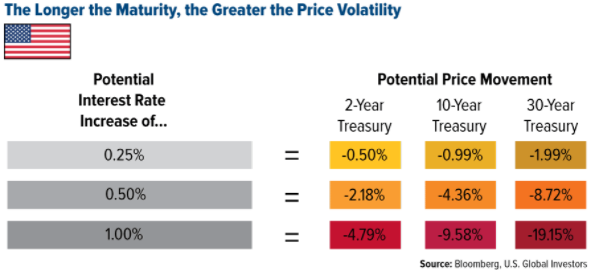
In recent months municipal market volatility caused primarily by interest rate expectations has had investors as well as local and state governments on edge.
Since August 2016, 10-year treasuries have rallied over 85 basis points, which is one of the sharpest increases seen in recent years. While investors were mainly concerned about their plummeting bond values, local and state governments were also eager to lock in the best rates for their debt issuances.
In this article, we’ll take a closer look at the market for municipal notes and how investors can hedge their investments in the current economic environment.
Municipal Notes
Muni notes are generally regarded as a short-term debt security issued by local or state entities to raise capital for their various needs. Notes are typically issued with a maturity of 12 months or less, although this can range from three months to three years as determined by the issuing entity. Much like other forms of municipal debt, investors can enjoy the tax-exempt yield on municipal notes.
Check out our Market Activity section to explore trades of municipal bonds and notes.
Points of Differences Between Muni Notes and Bonds
Muni notes differ from muni bonds on various levels. One of the main identifiers is the maturity assigned to municipal notes, which in turn determines the risk and return elements of the instrument as described below.
- Maturity: As mentioned above, muni notes are generally issued at a shorter maturity of one year or less, whereas municipal bonds are issued for longer maturities of anywhere from one year to 30 years. Even though muni bonds can be issued for shorter maturities, the majority of local and state entities primarily issue their municipal bonds for longer maturities of 20 years or more, to finance their infrastructure or other improvement needs.
- Purpose: As muni bonds are regarded as long-term debt, they are typically issued to finance major infrastructures of local and state governments like water infrastructure or park construction. On the other hand, muni notes are generally issued either to fund short-term infrastructure needs or in anticipation of revenue (discussed later in this article) to be received in the future.
- Interest rate risk: Interest rates and bond values carry an inverse relationship. However, the maturity of the instrument also plays a crucial role. A debt instrument with a longer maturity (i.e. muni bonds) is far more sensitive to interest rate change than an instrument with a shorter maturity (i.e. muni notes).
- Return yield profile: Given the longer maturity, higher interest rate risk and market risk, muni bonds tend to return higher yields than muni notes.
- Principal and interest payment terms: Whereas a majority of muni bonds pay an interest payment semi-annually and the principal payment upon maturity, muni notes tend to make only one payment upon maturity, which includes both interest and principal portion.
- Credit enhancement terms: Many municipal debt issuers explore the option of enhancing the ratings of their debt (municipal bonds) by securing insurance. For investors, since bonds are considered a long-term investment, they require some form of reassurance for their investment in case the municipality is not able to meet its financial obligations. When it comes to muni notes, since it’s only a short-term financing option, municipalities typically do not pursue any insurances.
Have a quick look at the glossary of muni industry terms to familiarize yourself with basic concepts frequently used by analysts and investors.
Muni Notes Pledge Future Cash Flows as Collateral
The majority of local and state governments use muni notes as an instrument to meet their short-term capital needs. “Anticipation notes” is another name for muni notes that are able to meet a city’s current cash flow needs by collateralizing a future stream of cash flows that the city is bound to receive. Once the future cash flow is received, it pays off the note obligation along with the interest due. There are three main types of anticipation notes issued by local and state entities:
| Tax anticipation note (TAN) | Revenue anticipation note (RAN) | Bond anticipation note (BAN) |
|---|---|---|
| TANs are issued to meet short-term capital needs when the entity is expecting future tax revenues. For instance, the Palm Beach County Florida School District offers a TAN (696552ET1) with an attractive 2% coupon, having a maturity of less than one year. | RANs also serve as a vehicle for local entities to raise capital, with the anticipation that future non-tax revenue (grants or other state aid) will pay off the debt. In anticipation of state grant revenue, Maryland St Transportation Authority (57429RBR3) is utilizing RANs. | The bond financing for larger projects can be a time-consuming, daunting task for smaller entities. BANs serve as a bridge to fund short-term capital needs until bond proceeds come in. Broome County New York (114727UF5) has utilized this financing option, using bond proceeds as a collateral to pay off the debt. |
Liquidity and the credit strength of the issuing entity are some of the key factors any investor should consider before making their investment decision in anticipation notes. Click on the states to look into the trades of muni bonds issued by Florida, Maryland and New York.
Impact of Near-Future Interest Rate Hikes on Muni Notes
In the rising rate environment, investors should be very cautious with their investment decision in any long-term debt instruments, unless your time horizon is long enough to hold your bonds until maturity.
This is where muni notes provide a perfect hedge against rising interest rate risk, because shorter maturities are far less sensitive to rate changes. This is exemplified in the image below, which shows the effects of incremental change in interest rates to different maturities. In the event that interest rates spike up 25 basis points, an investor holding a treasury (assuming $1000 par value) with a two-year maturity will see an unrealized loss of $5, whereas a longer 30-year maturity will see a loss of about $20. These same maturities will lose $48 and $191.50 respectively in the event of a 1% interest rate increase. These losses can be substantial when investors are holding a large quantity of maturities.

You can also check how shorter-term muni notes can reflect current rates more accurately than longer-term muni bonds.
Bottom Line
Any prudent fixed-income investor in debt instruments should always consider these three factors, in this order – safety, liquidity and yield. Given market uncertainty, muni notes provide a good safe haven for many investors, as well as keeping pace with inflation for their investments. There are also many municipalities that have recently emerged from financial troubles and are turning to short-term financings. Finally, before jumping into any safe-looking muni notes, investors should carefully analyze the creditworthiness of the issuing entity.
Check out the different muni bond investing strategies to stay up to date with the current happenings.






